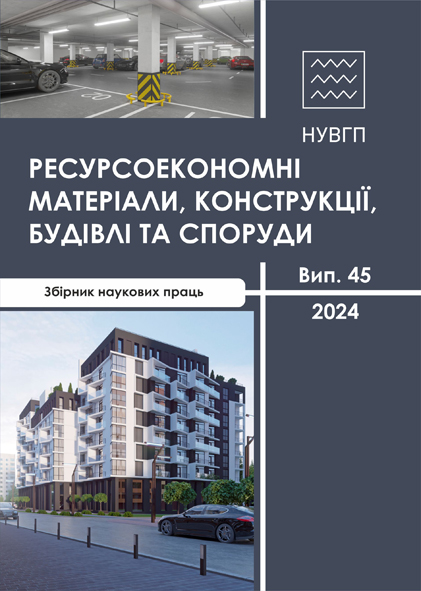FINITE ELEMENT MODELING IN THE CALCULATION OF REINFORCED CONCRETE SLABS
DOI:
https://doi.org/10.31713/budres.v0i45.10Abstract
thin slabs. But when modeling slabs with flat finite elements of a thin slab, the transverse forces are determined with errors. The sum of shear forces in plane finite elements is not equal to the value of the actual shear force near the supports and concentrated forces. To satisfy the equilibrium conditions, it is necessary to use reactions at the nodes of flat elements. But the designer uses the data on the values of transverse forces to select reinforcement and does not consider the reactions at the joints of the finite elements.
To more correctly determine the shear forces at supports and concentrated forces, elements of a thick slab can be used. To do this, however, the finite element mesh should be significantly refined.
Using the rod approximation allows you to correctly determine shear forces, especially near supports. It is shown that when using the rod approximation, the displacements and forces coincide with the real ones with very high accuracy. When calculating specifically thick slabs (really belonging to the thick category), the rod approximation can also be used. The bending rigidity of the approximating rods in this case should be taken in the same way as for thin slabs, and their torsional rigidity can always be selected depending on the ratio of the mesh size to the span of the slab and the methods of its support.
The accuracy of determining displacements when modeling with finite elements of a thin slab does not depend much on the finite element mesh, which cannot be said about modeling with elements of a thick slab. However, shear forces when using thin elements are determined with errors. This fact is verified using volumetric finite elements.
During design, if the magnitude of the transverse force is determined incorrectly, then a situation is possible when transverse reinforcement should be assigned, but due to an error it will not be assigned at all.
It is also shown that with the rod approximation, calculations taking into account cracking can be performed without condensing the finite element mesh. In this case, it is possible to reduce the stiffness not of the entire element between global nodes, but only of its part without increasing the number of unknowns in the system of equations.

